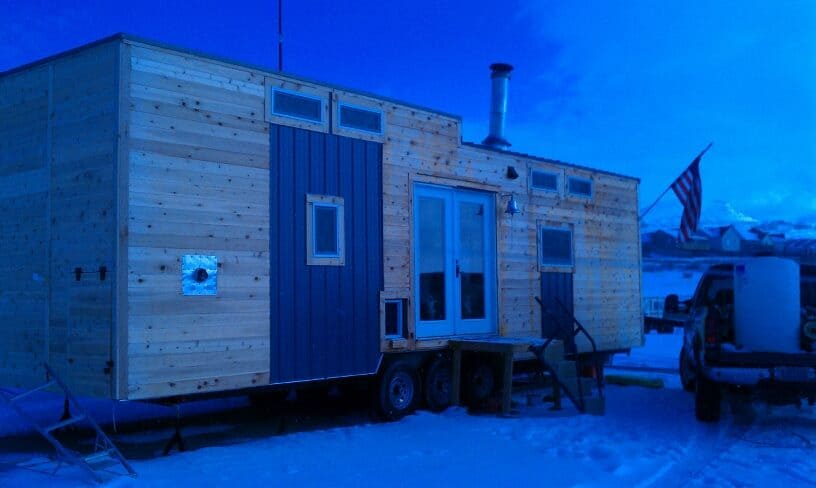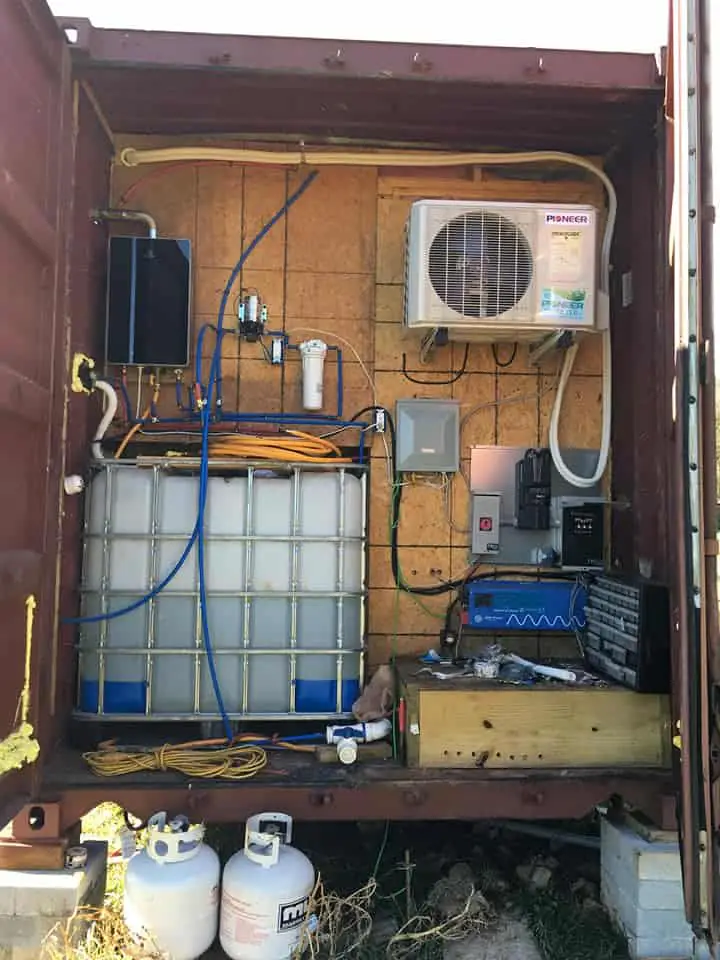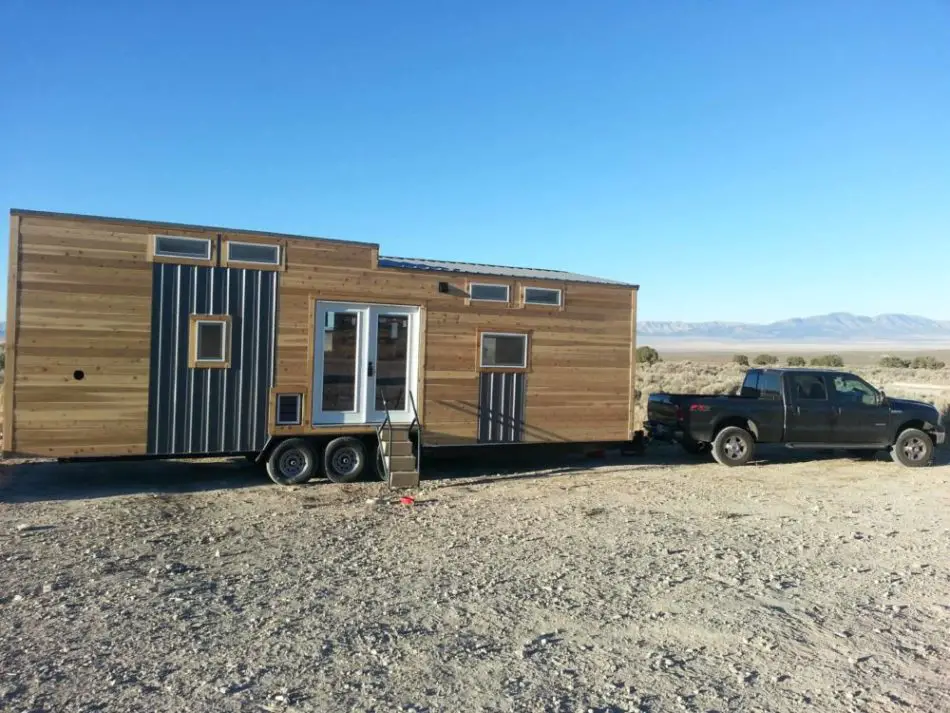
This article has been reviewed in accordance with our editorial policy.
A popular question is what it is like to live in a tiny house, years later. Let’s look more into the durability and living quality of tiny houses.
So, what’s it like living in a tiny house years later? Tiny houses are meant to last 10-15 years with the correct upkeep. They can last 20 years if built properly. But there some important factors that can effect their longevity. The living quality in a tiny house years later shouldn’t change unless your family size has changed.
My husband and I have been living in a tiny house for several years and I would like to give more insight into what it’s like years after going tiny.
Tiny House Durability
Tiny houses are built to last 10-15 years with proper maintenance. Of course the durability of your tiny house depends on it’s construction as well. It is best to buy a tiny house from a quality company.
When tiny houses first grew in popularity many people where interested in making some quick money off of this movement. There were several tiny house companies that built low quality tiny homes just for a profit, some of them didn’t even work.
If you look around on the internet you can find some horror stories about tiny house purchases. However, as time has passed and tiny houses have grown in popularity those companies who didn’t produce quality homes have been weeded out.
Those companies have gone out of business or been bought out by a quality company. Almost every tiny house company uses quality builders now. You can still request a tour of their facility.
One quote I read from a tiny houser that stood out to me said, I shouldn’t have bought a tiny house from someone who doesn’t live in a tiny house. Someone who believes in what they build will always produce superior quality.
Specialized Tinys, LLC, is currently the only tiny house company who’s owners actually do live in a tiny house.
Cassandra hui
Specialized Tinys, LLC, is currently the only tiny house company who’s owners actually do live in a tiny house. We started this business so that others could experience the freedom we have. My husband has built three of our own tiny houses and hundreds for other companies.
Most tiny house companies now produce very quality homes, they have a lot more experience than when the hype first started. If you are careful to take care of you tiny house it should last for years to come..
Tiny House Maintenance
Maintaining a tiny house is similar to maintaining a regular home. But there are a few major differences for upkeep on a tiny house to ensure it will last for years to come. This all depends on what type of tiny house you have.
If you have a tiny house on wheels (THOW), you will need to maintain the wheels for travel and when staying somewhere. Before moving the house you will need to be sure the lug nuts are tight, axles are greased, and all your lights work.
You will also need to check the quality of your tires. Be sure they have the proper air pressure, tire tread depth, and no dry rot. When necessary you will need to replace your tires, they are wearable parts.
When you are stopped for a while you will need to keep up with your tires as well. You will need to take the weight off of the wheels by lifting the trailer up on piers and use wheel covers. You do not need to take the wheels off, but you can if you prefer that.
Another major component you need to maintain in a tiny house is wood. Real wood needs to be sealed once every 3-5 years depending on the type of sealant and wood, and the climate you live in.
Many people use real wood for their siding, this will need the regular upkeep. But also, there can be wood inside your house that will also need to be sealed or painted. We actually have a shower made out of wood in our current house. And this we will need to reseal annually.
Additionally, if you have a tiny house that is off-grid there will be more maintenance. You will need to clean your holding tanks annually. And keep up with any solar or your other power source.
Solar is the easiest off-grid system to maintain. Besides cleaning solar panels they don’t require much else. Some people reposition their panels when the seasons change. You also need some keep up with your other solar components.
Keeping your computers clean of dust is important for your system. You also need to be sure the system is running properly. If you use too much power when you’ve had too many cloudy days and your batteries die or get extremely low, you can damage them.
If you have another power source it can require more maintenance. For example, our current house has solar and a wind turbine. A wind turbine needs to be cleaned and checked for cracks, you may even need to grease them depending on what type motor you have.
Tiny House Lifestyle after Years
One concern people have is if they will be happy years after living in a tiny house. I have been living tiny for four years now and I still love it. This answer obviously depends on the individual.
Going tiny is about making room for the things you love and getting rid of the things that get in your way. The more time you have to live the life you love should only make your happier.
Going tiny is about making room for the things you love and getting rid of the things that get in your way.
cassandra hui
Living in a tiny house has given me a closer relationship with my husband and the freedom to live how we want. We went tiny so we could own a home to save money and be able to constantly move. And we have accomplished both of those things.
Of course dealing with the legality of living in a tiny house gets old. But if you have a solid place to keep your tiny house and live in it, than you will not have that stress. Many laws are changing to make living tiny more attainable.
Of course if your family size changes it may be hard to continue to live in your current house. If you need another bedroom you may need a larger house. I think it is important to analyse this as much as possible before going tiny. But sometimes things happen out of your control.
Besides family growth, living in a tiny house years later shouldn’t be any different than when you first move in. You do have to continue to downsize, going through you things regularly and getting rid of anything you don’t need.
We still go through our stuff every six months to a year and downsize. There may be clothes that have holes, or items we just don’t use anymore. It is inevitable that you will collect things along your life, so downsizing is something you will do consistently.
It is much easier if you keep up with this as you go. When I get something I know I won’t use, I get rid of it. When I am organizing my cabinets, I get rid of anything I no longer use. I have honed this skill since I have been living tiny.
I constantly go through my things, the fridge, or anything else. Of course it is much easier when you have less stuff! After all these years of living tiny I have developed and grown in many areas, organizing, being healthier, and more.
The longer I have lived in a tiny house the more I have grown into a better person.
Related Questions
What is the required maintenance for a tiny house? If your tiny house is on wheels, you will need to maintain the tires and check everything before transport. If you have wood in your house you will need to seal it every few years. The type of maintenance your tiny house needs will vary based on how it was built.
How long do tiny houses last? Tiny houses are built to last about 10-15 years, if it is maintained properly. However, as long as you take good care of your home they can last 20 years or more. There are may factors that go into the longevity of a tiny house including the original quality.



